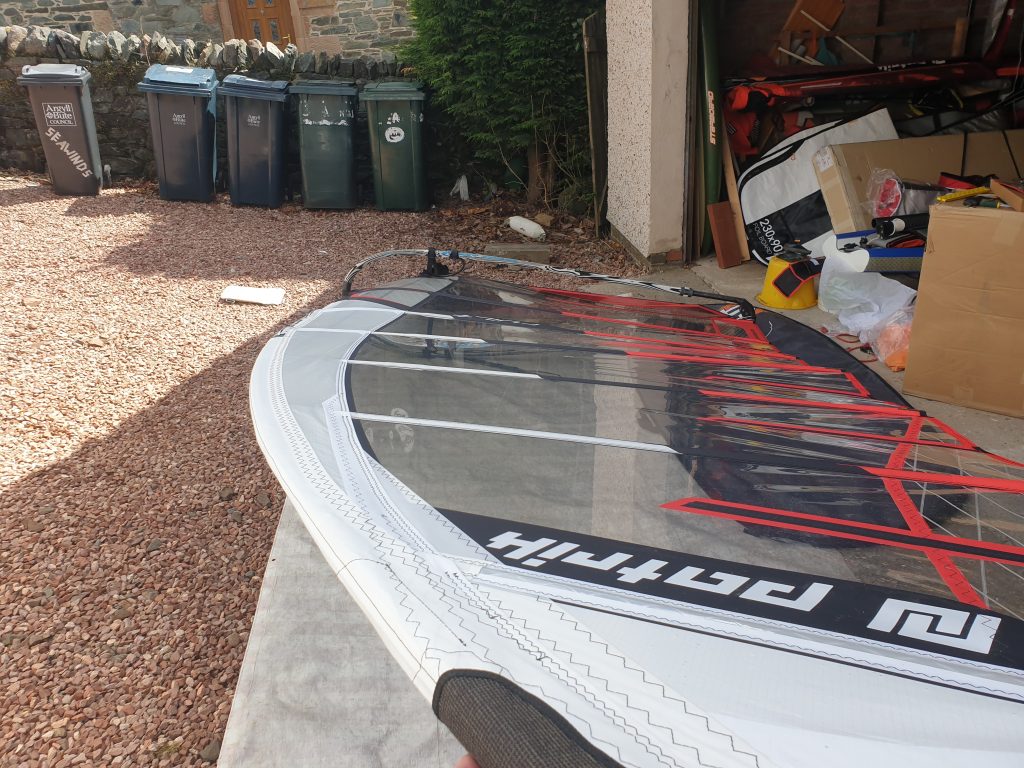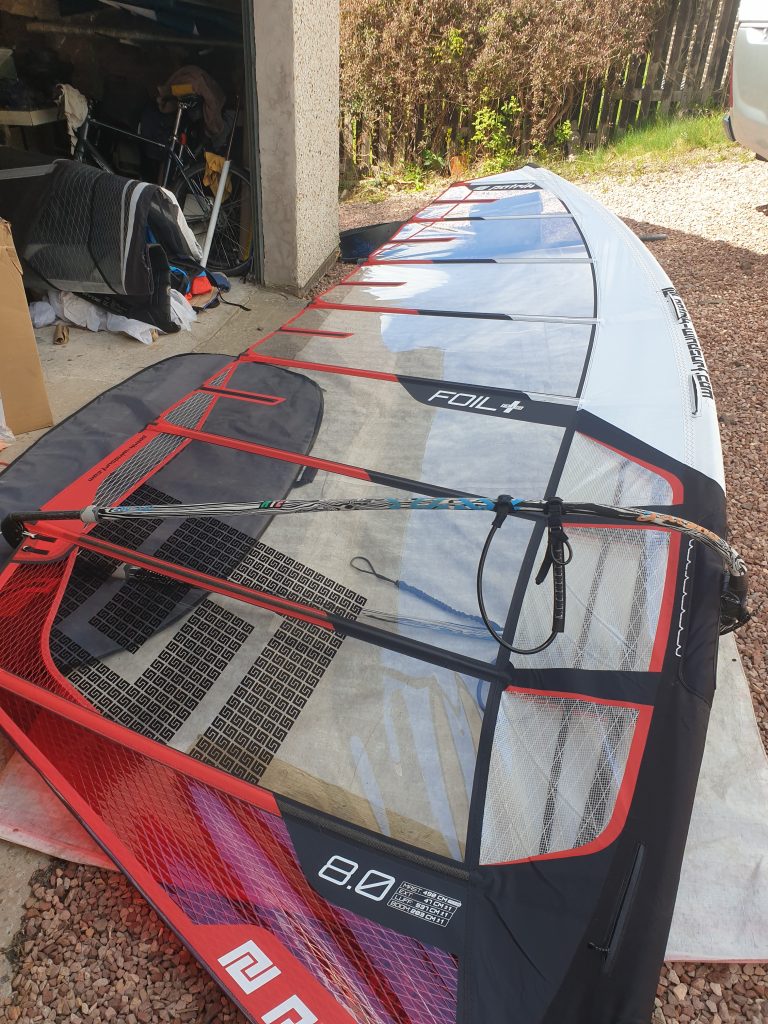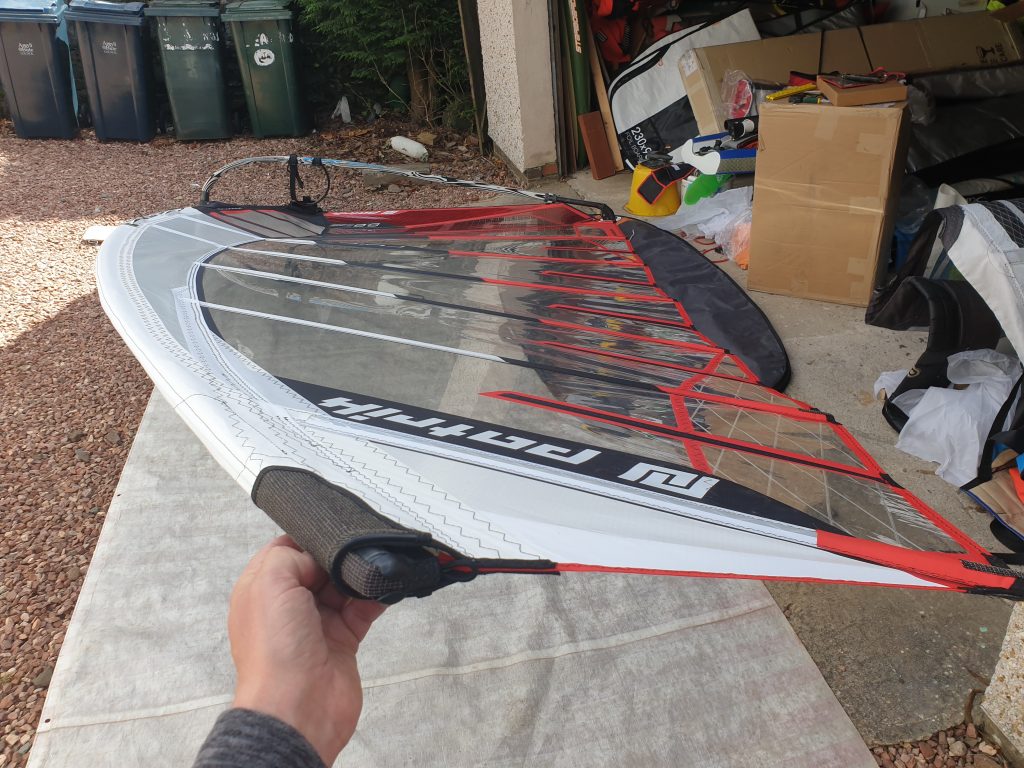Patrik Foil Comp 91 V2
First impressions – A compact board at 212cm long and 91cm wide. The boards rails are quite parallel meaning the board has a wide tail. The tail is wider than the tail on the comparable JP hydrofoil Slalom. As I have said before I like the limited paint finish but that is partly because it is easy to do invisible repairs on such boards. This is a full carbon board.
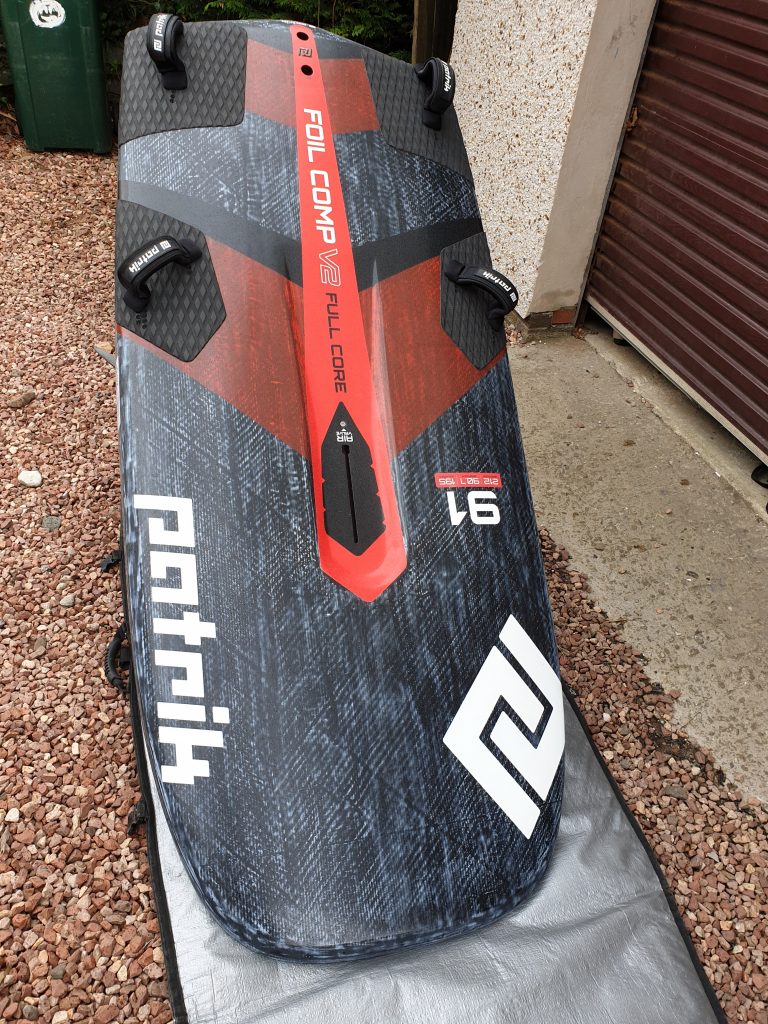
This board is not made in the cobra factory so it has some unique touches. The mast track seems to be more integrated in the board and it requires a flat mast base nut (supplied). While many brands have opted to have large oval foil bolt recesses and large bolt holes to aid bolt alignment, Patrik have decided to have tight fitting bolt holes. At first I thought it would take a bit of messing around to get the bolts to align with the deep tuttle head of the foil but in fact they were all perfectly aligned from the start. The board does require quite long foil bolts. I am using 80 and 70mm bolts on my AFS foil. While the board only offers outboard footstrap positions there is quite a lot of for/aft adjustment and also on the front straps you can alter the strap angle which is a nice touch. Judging by the strap positions on offer the board is designed as you would expect for race style foils with longer fuselages. With my 99cm fuselage I have been using the board with the 2nd from back footstrap positions.
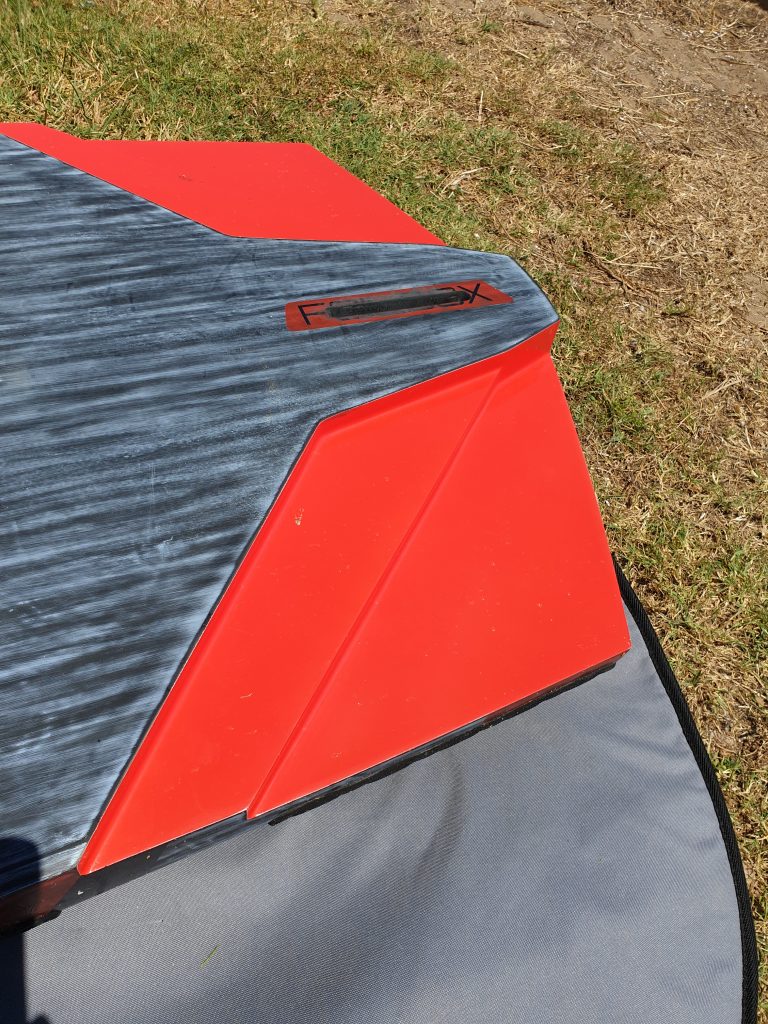
The rails are flat sided which allows Patrik to get the volume into a small package but also give some resistance making coming down with the board cranked over during a gybe that bit more survivable.
The board features massive double cutaways underneath the tail which reduce the wetted area under the tail significantly.
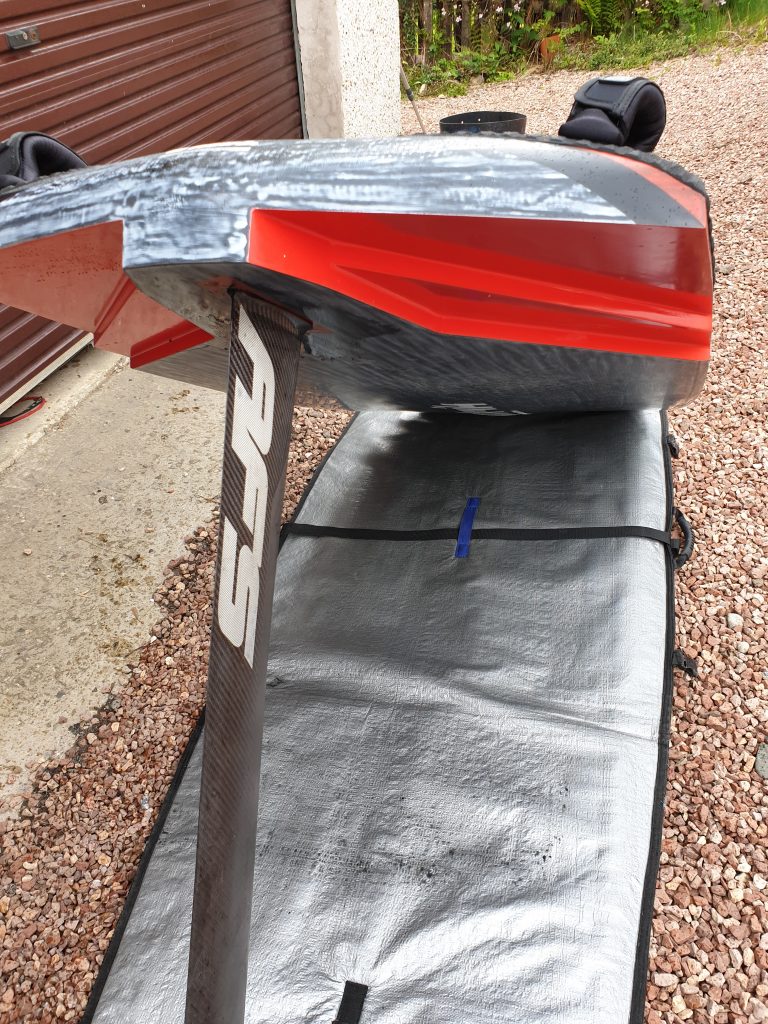
Also of note is the recessed mast track. While many other brands offer a shallow scooped out deck in order to lower the rig, Patrik have given a small but deep recess allowing for more volume in the board and adding to the boards stiffness.
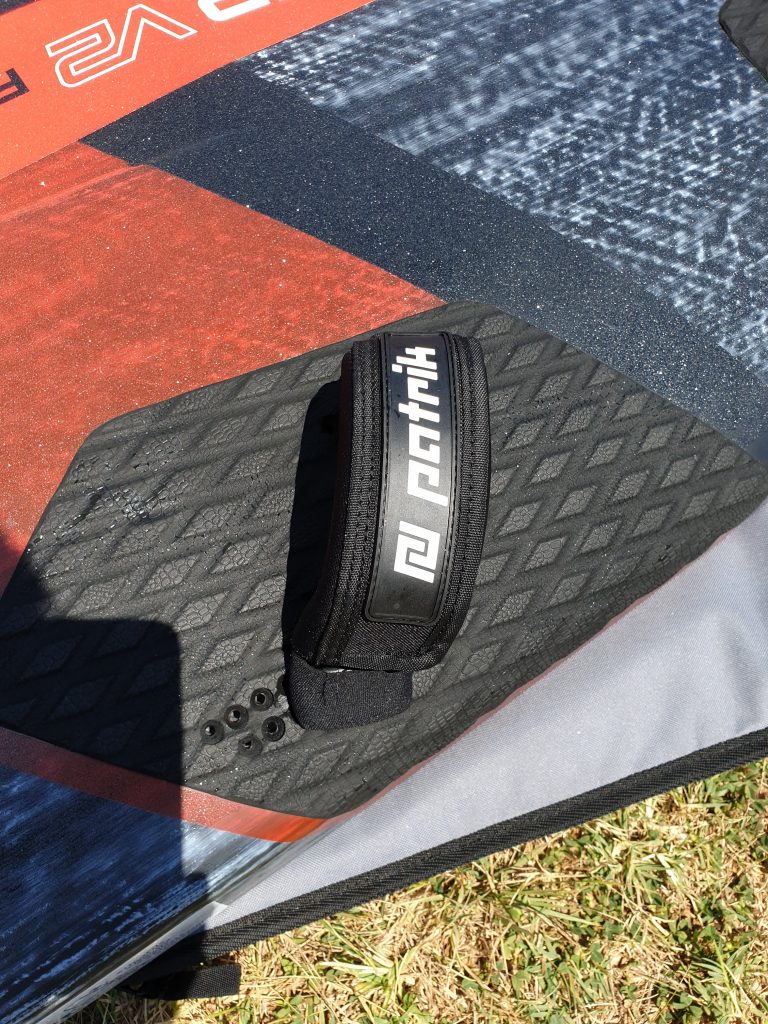
On the water – The foil comp offers plenty of support for even the heaviest riders allowing easy uphauling and tacking. It’s still not a long board and it is possible to submarine its nose if you are daydreaming while wallowing along. If you are not used to getting on such a wide board to uphaul it is a long way across the deck to grab the other side. I tend to either grab a far footstrap or the mast to haul myself onboard while ensuring I keep my harness spreader bar clear of the board.
Getting flying – The board offers plenty of support allowing you to get into the front strap early. For its volume you still want to get onto a broad reach for take off, remember it is still only 212cm long. The board releases easily (maybe with the aid of the cutouts) it works equally well with moderate sized sails as well as larger sails. When it is windy you don’t need to pump you can just drive the board off a piece of chop. I have used the board with an AFS W105 with R810 and R660 wings. Is it the earliest flying board I have used? Probably.
In flight – The board is comfortable in flight. Once set up correctly there is little left to do but enjoy the flight. It is comfortable in the straps but also surprisingly comfortable with the back foot out of the strap even with large sails. With the wide tail your back foot can still be quite outboard yet still on the inside of the back strap. The ride is comfortable and controlled at all angles to the wind. Again I should state I am not a racer but the board can point as high as I want and is comfortable on the downwind return journey. Any overfoiling mistakes and drops are easily recovered and the board will tend to bounce back up. Although be aware you may well be traveling faster on this board which makes dropping from over foiling a bit more dramatic.
Gybeing – It is a wide board so more footwork is involved as you initially step inboard and then across the board. Having said that, I find it easier to gybe than similar sized boards. There is obviously lots of space to adjust your feet. Should something happen to cause the board to come down on its rail the flat voluminous rails can save the day.
Overall – The Foil Comp is fast on all points of sail. I find many people wind foiling tend to stick to similar sailing angles, just going back and forth, back and forth. On the Foil Comp you really want to go places and cover a lot of water.
The board suits race style high aspect foils and sails over 6.0m. This is a board that is worth matching with an efficient sail and foil.
Who is this board for? – it obviously is suitable for anyone with racing aspirations at any level but it is also suitable for anyone wanting to push the boundaries of light wind flight.
The board cane be seen in action here


